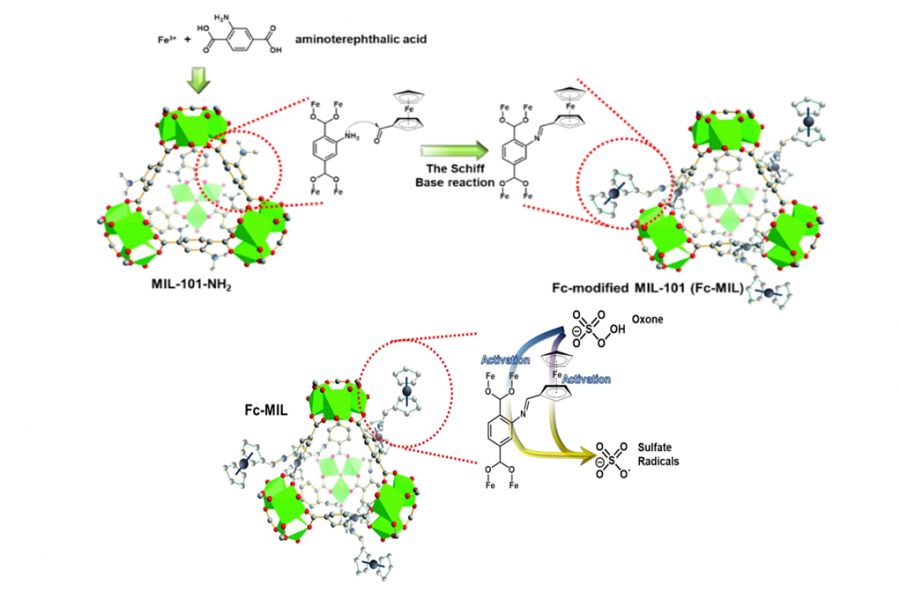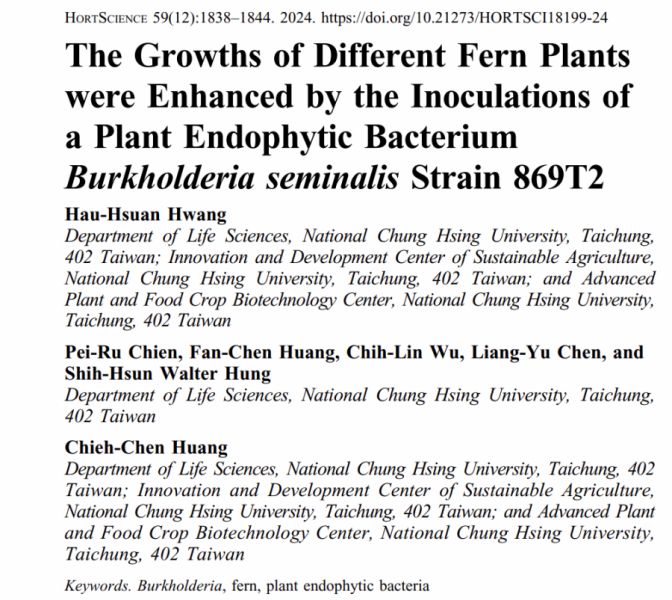| 論文篇名 | 英文:Ferrocene-modified iron-based metal-organic frameworks as an enhanced catalyst for activating oxone to degrade pollutants in water 中文:二茂鐵改質的鐵基金屬 - 有機骨架作為增強催化劑用於活化過氧化物以降解水中的污染物 |
| 期刊名稱 | Chemosphere |
| 發表年份,卷數,起迄頁數 | 2018, 213, 295-304 |
| 作者 | Meng-Wei Zhang , Ming-Tong Yang , Shaoping Tong*, Kun-Yi Andrew Lin*(林坤儀) |
| DOI | 10.1016/j.chemosphere. 2018.09.051 |
| 中文摘要 | 二茂鐵(Fc)被認為是一種有效的催化劑,可用於活化Oxone來生成硫酸根自由基,藉此降解污染物。本研究使用含鐵的有機骨架(MOFs),即為MIL-101來做為固定Fc的載體,先利用MIL-101-NH2和二茂鐵甲醛進行反應可得Fc-MIL,此材料具有高比表面積,也是可以激活Oxone的催化劑。本研究利用分批型實驗來確認Fc-MIL有更多的催化點可以來激活Oxone藉此降解莧菜紅,此外和其他研究相比,Fc-MIL用於降解莧菜紅的活化能較小,也證明了優於其他催化劑,未來此合成技術可以應用在其他Fc修飾的MOF在環境上的應用。 |
| 英文摘要 | Ferrocene (Fc) has been regarded as a useful catalyst for activating Oxone to generate sulfate radicals (SR) in degradation of organic pollutants. Nevertheless, direct usage of Fc molecules in aqueous solutions may lead to difficult recovery and aggregation. While a few attempts have immobilized Fc on several substrates, these substrates exhibit very low surface areas/porosities and, especially, do not offer significantly additional contributions to catalytic activities. In this study, a Fe-containing metal organic frameworks (MOFs), MIL-101, is particularly selected for the first time as a support to immobilize Fc chemically. Through the Schiff base reaction, ferrocenecarboxaldehyde can react with amine-functionalized MIL-101 (namely, MIL-101-NH2) to form Fc-modified MIL-101 (Fc-MIL). As Fc-MIL consists of both Fe from MIL-101 and Fc and also exhibits high surface areas, it appears as a promising catalyst for activating Oxone. Catalytic activities for Oxone activation by Fc-MIL are studied using batch-type experiments of amaranth dye degradation. Fc-MIL shows higher catalytic activities than its precursor MIL-101-NH2 owing to the modification of Fc, which equips with MIL-101 with more catalytic sites for activating Oxone. Besides, Fc-MIL also outperforms the benchmark catalyst of Oxone activation, Co3O4, to degrade amaranth. In comparison to the other reported catalysts, Fc-MIL shows the much smaller activation energy for amaranth degradation, proving its advantage over other catalysts. The synthesis technique proposed here can be also employed to develop other Fc-modified MOFs for other environmental catalysis applications. |
【學術亮點】二茂鐵改質的鐵基金屬 - 有機骨架作為增強催化劑用於活化過氧化物以降解水中的污染物 2018-09-11

循環農業:農業廢棄物高價值化【環境工程學系林坤儀副教授】






